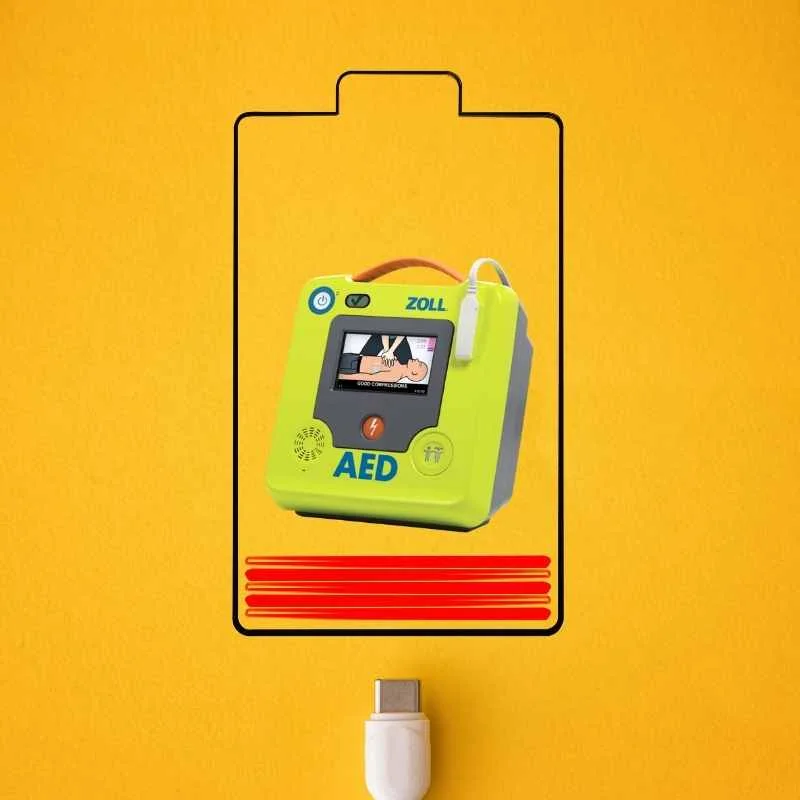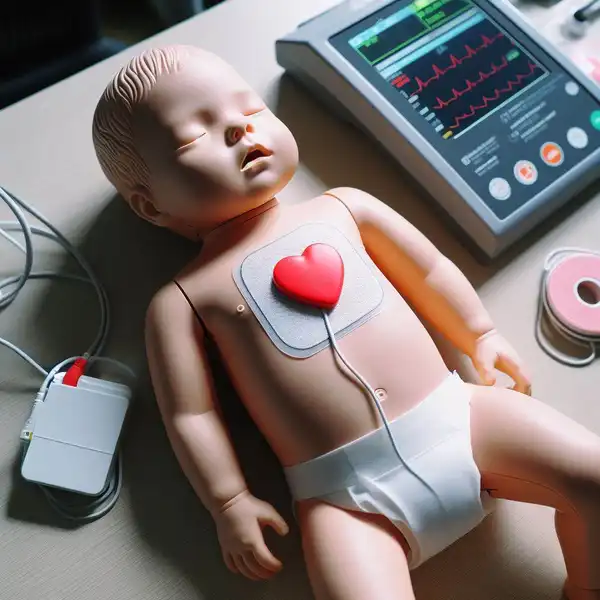Do Defibrillators Need a Power Supply or Recharging?

Updated 16/07/2024 with additional information on recharging and power supplies
Defibrillators do not need to be plugged into the wall. They are battery operated and are not designed to be recharged. When a defibrillator is needed in a sudden cardiac arrest emergency. It absolutely must have the battery power available to deliver potentially life-saving shocks. There’s no time to hunt for power cords or outlets when seconds count.
That’s why modern defibrillators like those found in workplaces and public spaces rely on long-lasting, sealed lithium battery packs rather than requiring any hardwired power supply or outlet connection. The batteries provide a reliable source of power whenever and wherever the device is needed.

How Defibrillator Batteries Work
Automated external defibrillators (AEDs) contain specialized lithium battery packs designed for to have a long stand-by life. These batteries are only used for one rescue and then they need to be replaced. These batteries offer numerous advantages over rechargeable power supplies:
- Always charged and ready for use with maximum power
- No maintenance requirements like recharging cycles
- Extremely long shelf life of 4+ years
- Simple to swap out expired batteries for new ones
Most of our AED models utilize batteries with a 4-year operational life when kept within the device’s temperature range and install date. However, the Defibtech Lifeline AED included in DDI Safety packages features an even longer-lasting 7-year battery.
This provides up to seven years of reliable standby power assurance right out of the package. When the 7-year battery life is up, Defibtech offers replacement batteries that can be easily swapped in.
Rechargeable Battery Packs Are Unreliable
While rechargeable batteries may seem convenient, they are simply not suited for powering life-critical emergency equipment like defibrillators:
- Lithium rechargeable packs degrade with every charge/discharge cycle
- If not recharged on schedule, they can be fully drained in an emergency
- Recharging systems add points of failure and maintenance complexity
With a defibrillator, you need confidence it will work perfectly when calling it into use after months or years of standby time. Sealed lithium batteries provide maximum reliability and simplicity.
Simple Battery Replacement Is Critical
Of course, replacing batteries on schedule is critical AED maintenance. But this single swap every 4-7 years (depending on model) is far easier than recharging rechargeable packs.
It gives you assurance the AED has its full rated power whenever needed, with no strings attached. No power supply, charging station or available outlets required.
Check out our guide Understanding Defibrillator Function and Use for more details on this life-saving technology.
No: One of the most critical requirements for an Defibrillator (AED) is that it simply works when needed in a sudden cardiac emergency. There’s no time to fuss with charging or unreliable batteries when someone’s life is on the line.
That’s why modern AEDs are designed with simple, reliable battery systems that don’t require any manual charging or maintenance by users. They utilize long-lasting lithium batteries intended for a single use.
The Benefits of Non-Rechargeable AED Batteries
AEDs found in public places like offices, schools, airports etc. rely on non-rechargeable lithium batteries for several important reasons:
- Always Ready for Use With a non-rechargeable battery, the AED is always armed and ready to operate at maximum power during a cardiac emergency. There’s no risk of the battery being uncharged or losing power capacity from repeatedly charging/discharging over time.
- Simple to Maintain By using a sealed lithium battery intended for one-time use, there’s no need to worry about recharging schedules or battery maintenance procedures. As long as the battery is replaced when used or before its expiration date, the AED will be operational.
- Maximum Shelf Life The lithium battery cells used in AEDs have an incredibly long shelf life of 4+ years. (This stunner even has a 7 year standby) when left untouched. This ensures the battery will be fresh and highly reliable if called into use at any point during that span.
Why Rechargeable AED Batteries Are Disfavoured
While rechargeable battery packs may seem convenient, they are not well-suited for powering life-saving defibrillators:
- Rechargeable batteries degrade with every charge/discharge cycle, leading to shorter lifetimes and unpredictable capacities over time
- If not religiously recharged on a schedule, they can be uncharged or drained when needed in an emergency
- Charging systems add complexity, cost, and potential points of failure to the AED design
For safety-critical devices like AEDs that may sit for months or years between uses, a simple and reliable one-time battery is significantly preferred.
Changing AED Batteries Is Important
Of course, AED owners and facilities managers need to properly follow the manufacturer’s guidelines for routine battery replacement on a set schedule, typically every 4 years.
However, this simple swap of a sealed lithium battery is far easier than recharging and capacity testing a rechargeable pack. And it provides maximum assurance that the AED will be ready to deliver its full rated charge when called into use.
To understand more about the operating principles and technology behind AEDs, read our in-depth guide Understanding Defibrillator Function and use here on DDI Safety.





